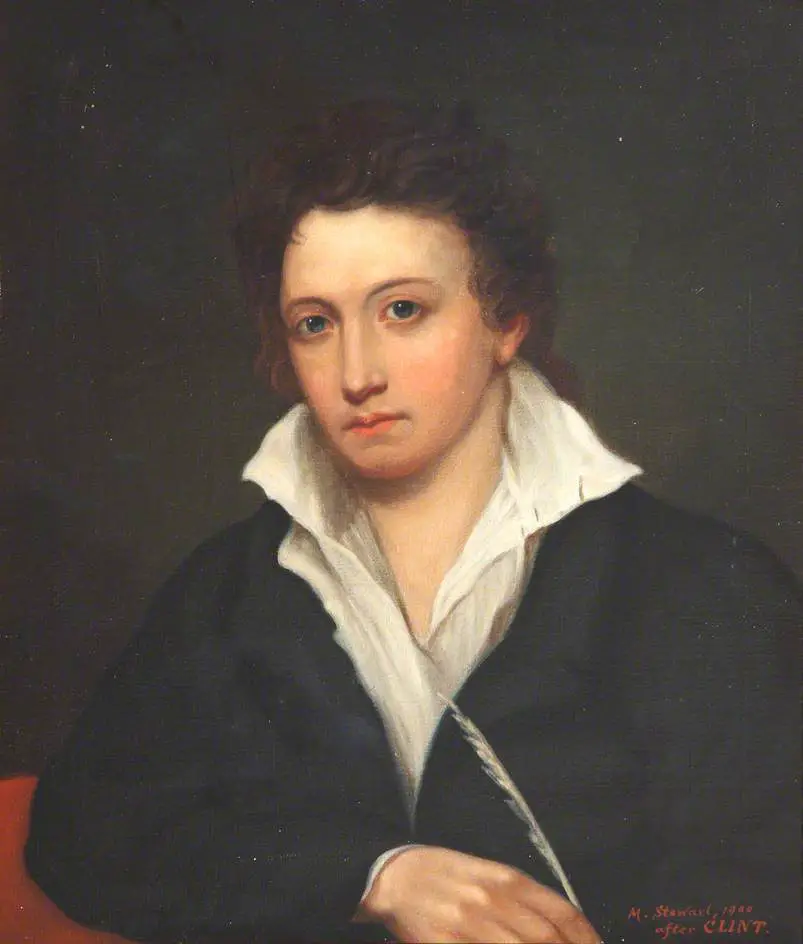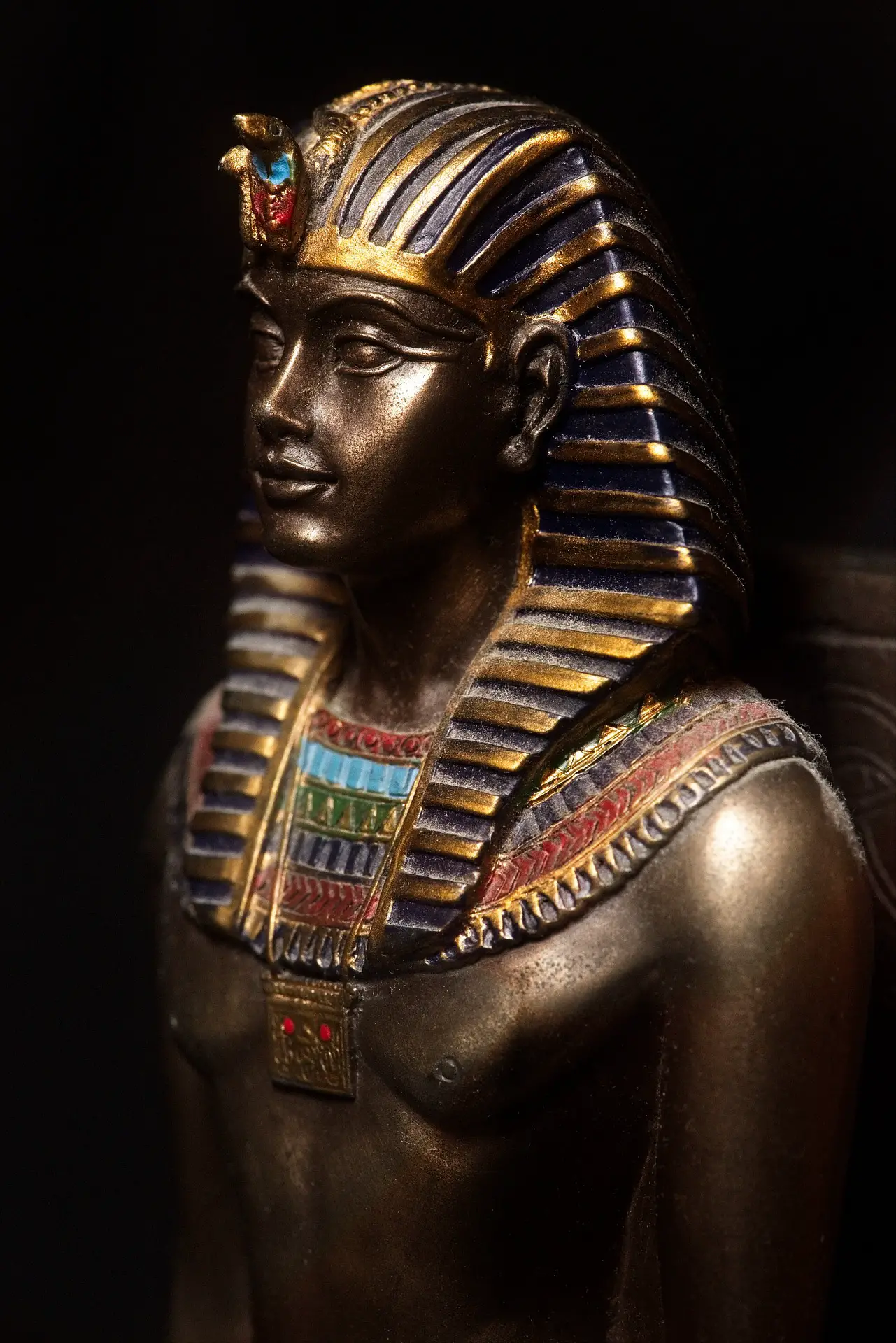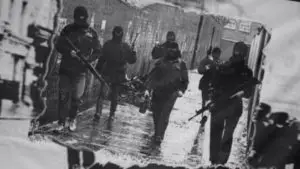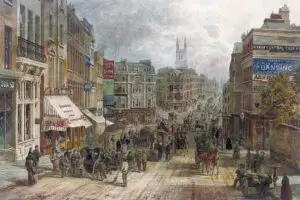
FULL POEM - SCROLL DOWN FOR LINE-BY-LINE ANALYSIS
I met a traveller from an antique land,
Who said—“Two vast and trunkless legs of stone
Stand in the desert. . . . Near them, on the sand,
Half sunk a shattered visage lies, whose frown,
And wrinkled lip, and sneer of cold command,
Tell that its sculptor well those passions read
Which yet survive, stamped on these lifeless things,
The hand that mocked them, and the heart that fed;
And on the pedestal, these words appear:
My name is Ozymandias, King of Kings;
Look on my Works, ye Mighty, and despair!
Nothing beside remains. Round the decay
Of that colossal Wreck, boundless and bare
The lone and level sands stretch far away.”

LINE-BY-LINE ANALYSIS
STANZA 1
I met a traveller from an antique land,
The first line of this famous sonnet introduces ‘a traveller from an antique land’ whose identity Shelley purposefully does not reveal. The ambiguity of this opening line immediately creates a sense of mystery and intrigue. The story is then told from the traveller’s perspective in the following lines, detaching the narrator and, therefore, Shelley himself from the poem’s message.
Who said—“Two vast and trunkless legs of stone
Stand in the desert. . . . Near them, on the sand,
The traveller begins to recount his story to the narrator, describing how two large ‘trunkless’ (torsoless) stone legs of a statue stood in the desert. As revealed later in the poem, the statue is of the Egyptian pharaoh Ramesses II, also known as Ramesses the Great or Ozymandias in Greek sources, from which the poem takes its name. He is widely regarded as the greatest, most powerful pharaoh of Ancient Egypt thanks to his celebrated building and military accomplishments.
Half sunk a shattered visage lies, whose frown,
And wrinkled lip, and sneer of cold command,
The ‘visage’ or face of the ruined statue lies in the sand at the base of the legs. The traveller describes the face as having a grimaced, contemptuous expression. The image of the head of the statue broken and lying in the sand is a metaphor for Ramesses’s fall from power – all that remains of this once so powerful ruler is this shattered legacy. More generally, the poem’s message is that mankind’s aspirations for power and domination are futile and no matter how hard they try the passage of time and Mother Nature will prevail and render their legacy insignificant.
Tell that its sculptor well those passions read
Which yet survive, stamped on these lifeless things,
The hand that mocked them, and the heart that fed;
In these three lines, the traveller describes how the sculptor skillfully captured Ramesses’s cruel facial expressions and, hence, the cruelness of his ‘heart that fed’ them, or in other words the merciless nature of his character. The fact that his cruelty is what has been captured and what remains on this ‘lifeless’ (highlighting mortality) statue emphasises that Ramesses’s legacy is not his power or triumphs but instead his cruelty and the destruction he left in his wake.
And on the pedestal, these words appear:
My name is Ozymandias, King of Kings;
Look on my Works, ye Mighty, and despair!
Inscribed on the pedestal upon which the statue stands are these boastful remarks in which Ramesses flaunts his self-proclaimed almighty power, referring to himself as the ‘King of Kings’, a title commonly equivalent to that of emperor, a title even more prestigious than that of king. The title is also used in reference to Jesus Christ several times in the bible, hence its inclusion here could be interpreted as Ramesses stating that he possesses godly power, beyond that of mortal comprehension. As well as his power, he flaunts his ‘works’ (his kingdom and accolades), expecting them to survive long into the future, instilling awe and fear into whoever beholds them.
Nothing beside remains. Round the decay
Of that colossal Wreck, boundless and bare
The lone and level sands stretch far away.”
These final three lines, however, state that ultimately none of his ‘works’ remain, on the contrary, the desert surrounding the statue is ‘boundless and bare’, with the former kingdom over which he ruled having proved powerless against the passage of time and resultantly dissolved to sand. Nothing remains of the kingdom and legacy that Ramesses had thought immortal and his boastful confidence in the previous couplet that both would survive is dramatic irony. The statue’s insignificance compared to the ‘lone and level sands’ that ‘stretch far’ around it is a metaphor for Ramesses’s, and the entirety of mankind’s, insignificance compared to Mother Nature. And herein lies Shelley’s message to the reader – a message Shelley intentionally made indirectly via the traveller’s dialogue due to how it controversially undermines kingship and royalty.


